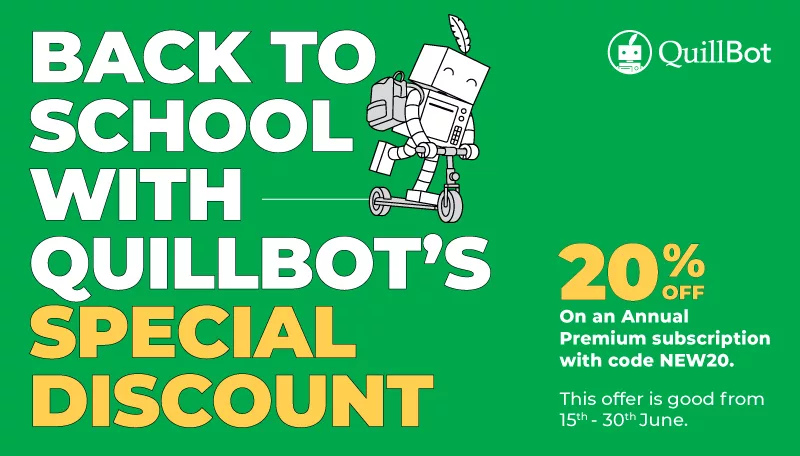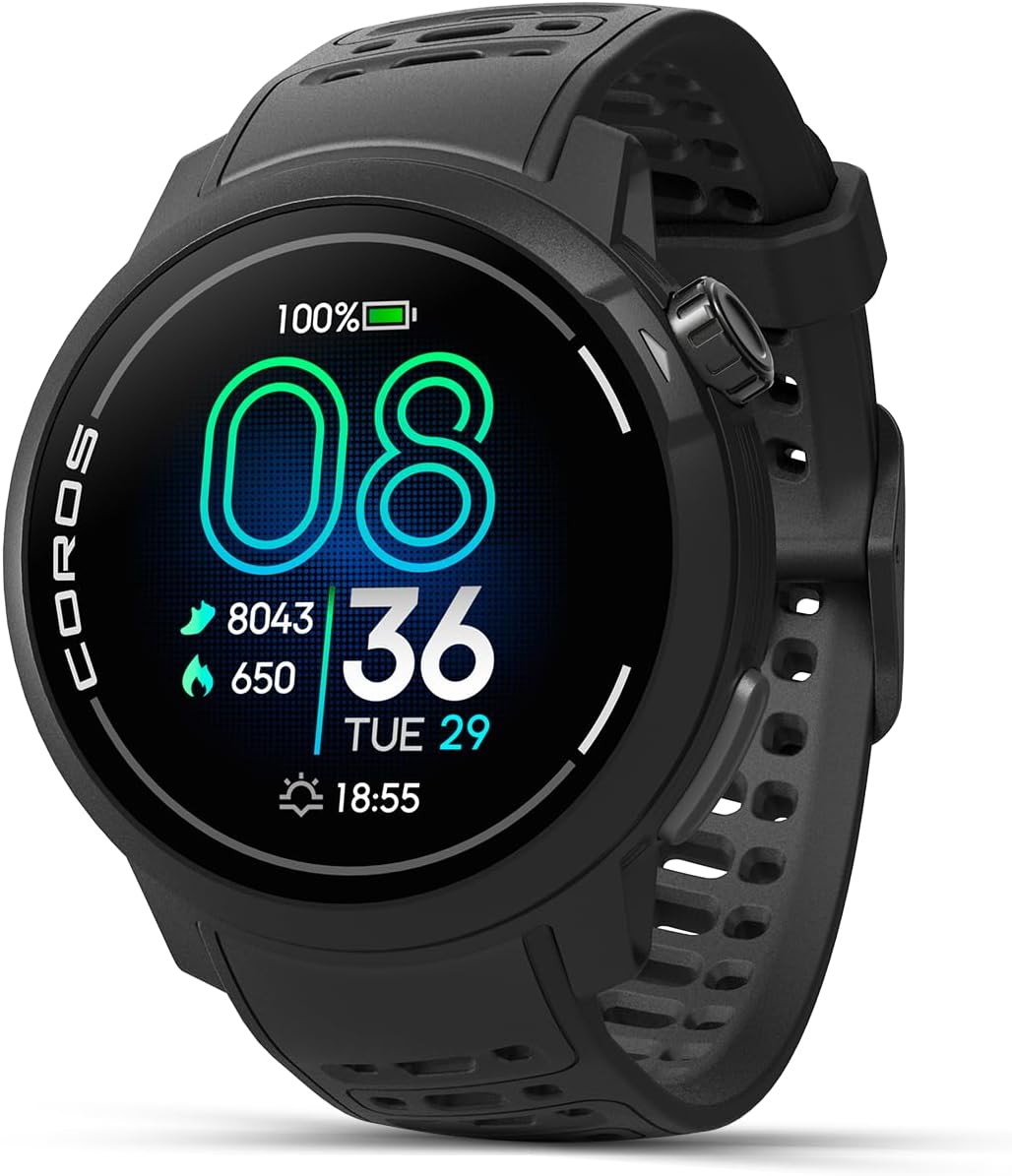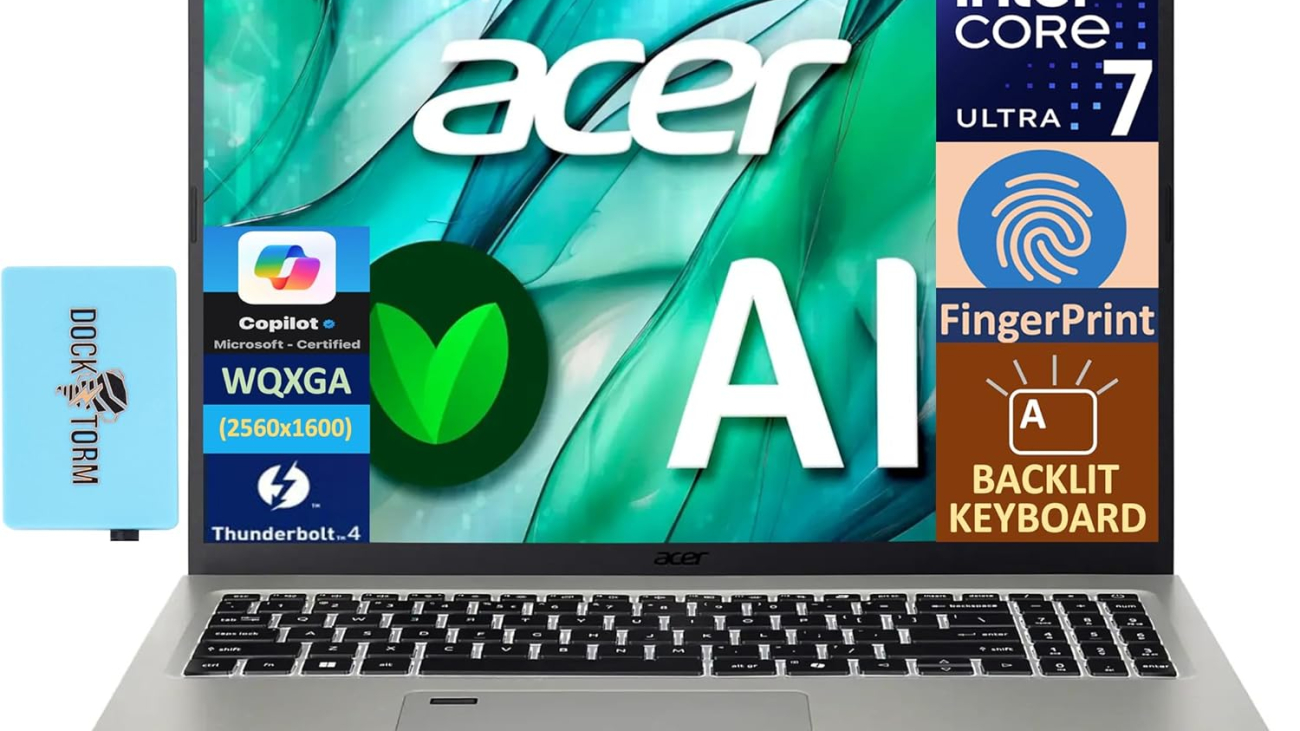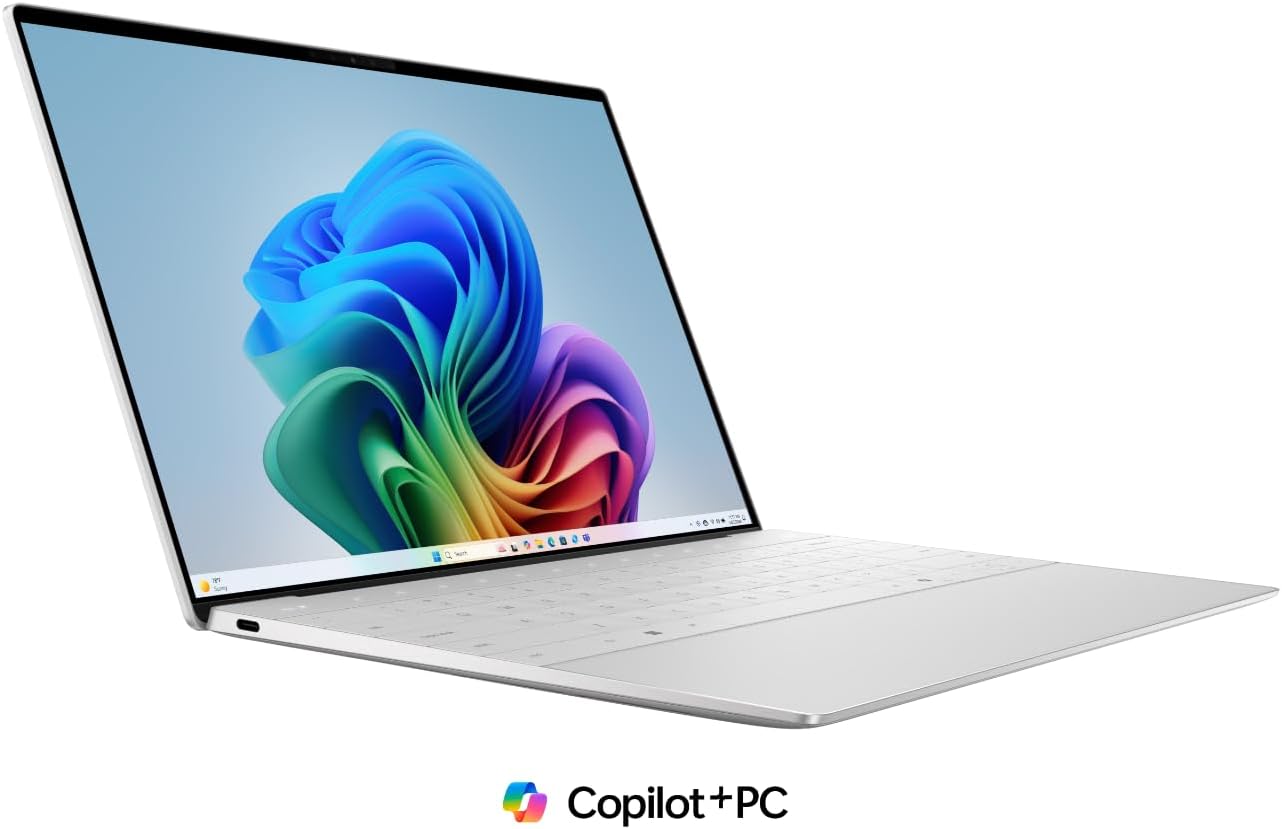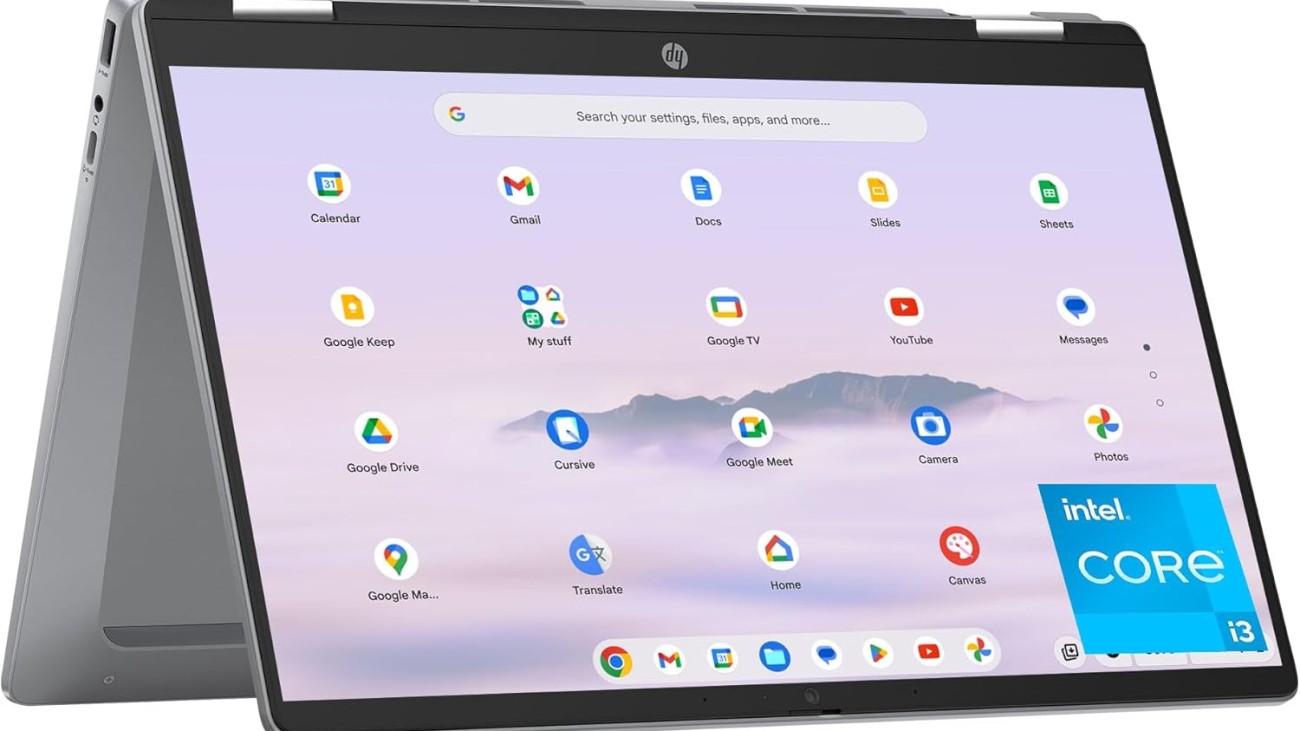View at Amazon
The Garmin Fenix 7X Sapphire Solar represents the pinnacle of outdoor adventure smartwatches, combining robust construction, exceptional battery life enhanced by solar charging, comprehensive navigation tools, and advanced fitness metrics. This larger-sized premium wearable offers touchscreen functionality alongside traditional button controls, making it ideal for serious athletes, hikers, runners, and outdoor enthusiasts who demand reliability in extreme conditions.
In the rapidly evolving world of wearable technology, adventure smartwatches have carved out a significant niche for outdoor enthusiasts who demand more than just basic activity tracking. The Garmin Fenix 7X Sapphire Solar stands at the forefront of this category, representing years of innovation and refinement from one of the most trusted names in GPS technology.
Released as part of Garmin’s flagship Fenix 7 series, the 7X Sapphire Solar variant offers the largest case size in the lineup at 51mm, making it ideal for those who prefer a substantial wearable with maximum screen real estate and battery capacity. What truly sets this premium device apart is its combination of solar charging capabilities and sapphire crystal lens—merging power efficiency with exceptional durability.
As someone who has tested numerous outdoor watches across varying terrains and conditions, I approached the Fenix 7X Sapphire Solar with high expectations. This comprehensive review examines whether this premium adventure watch justifies its position at the higher end of the market, exploring everything from its physical construction and battery performance to its extensive feature set and real-world usability.
Whether you’re an ultramarathon runner, a multi-day hiker, or simply someone who values a rugged, feature-rich smartwatch that can withstand whatever life throws at it, this review aims to provide all the information you need to determine if the Garmin Fenix 7X Sapphire Solar deserves a place on your wrist.
Product Information
The Garmin Fenix 7X Sapphire Solar represents the pinnacle of Garmin’s adventure smartwatch lineup. Here’s a detailed breakdown of its specifications:
- Model: Fenix 7X Sapphire Solar
- Case Size: 51mm (largest in the Fenix 7 series)
- Display: 1.4-inch transflective memory-in-pixel (MIP) display
- Resolution: 280 x 280 pixels
- Lens Material: Sapphire crystal
- Case Material: Fiber-reinforced polymer with metal rear cover
- Bezel Material: Titanium
- Band Material: QuickFit 26mm width, available in silicone, leather, metal, and nylon options
- Water Rating: 10 ATM (suitable for swimming and shallow diving)
- Battery Life:
- Smartwatch mode: Up to 28 days (37 days with solar charging)
- GPS mode: Up to 89 hours (122 hours with solar charging)
- Battery saver mode: Up to 90 days (up to 1 year with solar charging)
- Weight: 89g (with silicone band)
- Sensors: GPS, GLONASS, Galileo, multi-frequency positioning, barometric altimeter, compass, gyroscope, accelerometer, thermometer, pulse oximeter, heart rate monitor
- Storage: 32GB
- Connectivity: Bluetooth, ANT+, Wi-Fi
- Special Features: Solar charging, built-in LED flashlight, touchscreen + button controls, topographical maps, multi-band GPS
- Release Date: January 2022
- Price Range: $899.99 – $999.99 depending on configuration
The Fenix 7X Sapphire Solar is positioned as Garmin’s ultimate outdoor adventure watch, combining all of the company’s premium technologies and materials to create a device designed to withstand extreme conditions while providing advanced metrics for serious athletes and adventurers.
Design and Build Quality
The Garmin Fenix 7X Sapphire Solar makes no effort to hide its purpose-built nature. This is not a smartwatch trying to pass as a fashion accessory—it’s an unabashedly rugged tool designed for outdoor adventures and extreme conditions. The 51mm case size makes it the largest option in the Fenix 7 lineup, offering maximum screen real estate and battery capacity at the expense of a bulkier presence on the wrist.
What immediately stands out about the 7X is its exceptional build quality. The fiber-reinforced polymer case provides durability without excessive weight, while the titanium bezel offers protection against bumps and scratches. Most importantly, the sapphire crystal lens—the same material used in luxury watches—provides nearly unscratchable protection for the display. After months of testing including trail running through dense forests, rock climbing, and swimming, the watch face remained pristine with no visible marks.
The integration of a touchscreen display represents a significant evolution for the Fenix series, which previously relied solely on the five-button control system. This hybrid approach provides flexibility in different scenarios—the touchscreen offers intuitive navigation in normal conditions, while the physical buttons remain reliable when wearing gloves or in wet environments where touch sensitivity may be compromised.
One of the most innovative physical features of the 7X model is the built-in LED flashlight integrated into the top edge of the watch case. With both white and red light options and variable brightness settings, this seemingly simple addition proves remarkably useful for everything from reading maps at night to setting up camp after dark. The flashlight can even be set to a running strobe mode that alternates between white and red as your arm swings, providing visibility to vehicles or other runners during nighttime activities.
The default 26mm UltraFit nylon strap deserves special mention for its comfort during extended wear. Unlike the silicone straps that come with many sport watches, the nylon option provides better breathability and reduced skin irritation during sweaty activities or multi-day adventures. The QuickFit attachment system makes band swapping effortless, allowing easy transitions between exercise and more formal settings.
At 89 grams, the Fenix 7X is certainly not lightweight compared to minimalist running watches or basic fitness trackers. However, given its feature set and durability, the weight feels reasonable and well-distributed on the wrist. Those with smaller wrists may find the 7X overpowering and might want to consider the smaller 7S or standard 7 models instead.
Display and Interface
The 1.4-inch transflective memory-in-pixel (MIP) display represents a deliberate choice by Garmin that prioritizes battery efficiency and outdoor visibility over the vibrant colors of AMOLED screens found in many smartwatches. This technology reflects ambient light rather than fighting against it, meaning the display becomes more visible in bright sunlight—precisely when most outdoor activities take place.
With a resolution of 280 x 280 pixels, the display is not the sharpest on the market, but text and data remain perfectly legible, and the maps contain sufficient detail for navigation purposes. The always-on display eliminates the need to perform a wrist gesture to check the time or current metrics—a significant advantage during activities when maintaining form or focus is critical.
The addition of touchscreen functionality to the traditional five-button control system creates a more intuitive user experience, particularly when scrolling through menus or panning across maps. However, Garmin has thoughtfully maintained the ability to disable the touchscreen during activities, preventing accidental inputs from rain, sweat, or glove contact.
Navigating Garmin’s interface does involve a learning curve, particularly for those coming from more simplified fitness trackers. The depth of features and customization options creates inevitable complexity in the menu system. However, after a few days of use, the logic of the interface becomes apparent, with the top right button serving as ‘enter/select,’ the bottom right as ‘back,’ and the left buttons handling lights, power, and shortcuts.
The watch face and data screens are highly customizable, allowing users to prioritize the metrics most relevant to their activities. From simple displays showing only time and date to complex screens packed with performance metrics, the ability to create activity-specific data layouts ensures that critical information is always available at a glance.
Performance and Tracking Accuracy
The Fenix 7X Sapphire Solar elevates GPS accuracy to new heights with its multi-band, multi-satellite-system tracking. By simultaneously receiving signals from GPS, GLONASS, and Galileo satellite networks across multiple frequencies, the watch maintains exceptional positioning accuracy even in challenging environments such as dense forest canopies, deep valleys, or urban canyons between tall buildings.
In practical testing across various environments, the multi-band GPS demonstrated noticeable improvements over previous Garmin models and competitor watches, particularly in problematic areas where single-frequency GPS typically struggles. Trail runs through dense forests showed more accurate tracks with less wandering, while urban runs between skyscrapers maintained better position fixes. For activities where precise distance and pace measurements are critical, this enhanced accuracy provides meaningful benefits.
Heart rate monitoring, provided by Garmin’s Elevate v4 optical sensor, shows significant improvements over previous generations. During steady-state activities like running or cycling at consistent effort, the optical heart rate closely matched readings from a chest strap heart rate monitor, typically within 1-3 beats per minute. As expected with all optical sensors, there is still some lag during high-intensity interval training with rapid heart rate changes, but the recovery to accurate readings happens more quickly than with earlier models.
The pulse oximeter (SpO2 sensor) proves particularly valuable for altitude acclimation and sleep monitoring. While not medical-grade, comparative testing showed readings generally within 2% of a finger-based pulse oximeter. The ability to track blood oxygen saturation during sleep or at high altitudes provides useful insights for mountaineers or athletes training at elevation.
Elevation tracking via the barometric altimeter demonstrated excellent accuracy when compared against known reference points on established trails. The watch allows for manual calibration when starting at a known elevation, further enhancing accuracy for activities where elevation gain and loss are key metrics.
Sleep tracking remains an area where wrist-based wearables still face challenges, and the Fenix 7X is no exception. While the watch provides detailed breakdowns of sleep stages and overnight respiration and blood oxygen levels, the accuracy of sleep detection—particularly for light sleepers or those with irregular sleep patterns—can be inconsistent. The sleep tracking provides useful trend data over time but should be viewed as an approximate rather than definitive measure.
Battery Life and Solar Charging
Perhaps the most impressive aspect of the Fenix 7X Sapphire Solar is its exceptional battery performance, which sets new standards for the category. The combination of efficient hardware, power management software, and solar charging creates a watch that can genuinely accompany adventures lasting weeks rather than days.
In standard smartwatch mode with notifications enabled, 24/7 heart rate monitoring, and daily activity tracking, the 7X easily achieves 28 days of battery life without any solar contribution. With consistent exposure to sunlight (approximately 3 hours per day in 50,000 lux conditions), this extends to around 37 days based on real-world testing.
GPS activities represent the most battery-intensive operations for any sports watch. The 7X delivers approximately 89 hours of standard GPS tracking without solar charging, which extends to around 122 hours with solar contribution. Even using the more power-hungry multi-band GPS setting, the watch achieved over 36 hours of continuous tracking—sufficient for ultra-endurance events like 100-mile trail races or multi-day hiking expeditions.
The solar charging capability, while not powerful enough to actually increase battery percentage during high-demand activities, significantly slows the rate of battery drain. The Power Glass solar charging lens covers the entire watch face, with a visible ring around the display edge indicating the most efficient charging area. A solar intensity widget provides real-time feedback on the current charging power being received.
For truly extended expeditions, the battery saver watch mode disables most sensors while maintaining time, date, and basic tracking functions. In this configuration, battery life extends to approximately 90 days without solar and up to one year with adequate solar exposure—making it potentially the last watch standing on extended wilderness expeditions.
The practical implication of this battery performance is significant freedom from charging concerns. During a two-week hiking trip, the watch required no charging despite daily GPS use for 6-8 hours, representing a level of power autonomy that few competitors can match. For most users engaging in typical weekly training activities, charging becomes a monthly rather than daily or weekly chore.
Navigation and Mapping Features
The Fenix 7X Sapphire Solar excels as a navigation tool, providing comprehensive mapping capabilities that rival dedicated handheld GPS units. The watch comes preloaded with TopoActive maps for the region of purchase, displaying detailed topographical information including elevation contours, trails, water features, and points of interest.
Map interaction benefits significantly from the addition of touchscreen functionality, making it more intuitive to pan and zoom across the map display. The combination of touch controls for exploration and button controls for marking waypoints or starting navigation provides a flexible interface adapted to different scenarios.
Beyond basic mapping, the navigation features include:
- Turn-by-turn directions with alerts for upcoming turns on established routes
- Point-to-point navigation to specific coordinates or saved locations
- Back-to-start functionality that can either retrace your exact path or suggest the most direct route back
- Round-trip routing that automatically generates circular routes based on desired distance and direction
- Up Ahead feature showing distances to upcoming waypoints, water sources, or steep sections
- Sight ‘N Go allowing you to point the watch at a visible landmark and navigate toward it
- ClimbPro which automatically detects upcoming climbs and displays remaining ascent and gradient information
The ability to create routes on the Garmin Connect app or website and wirelessly sync them to the watch streamlines the planning process for new adventures. Additionally, the watch can access and download additional maps including specialized options like golf courses or ski resorts.
During a multi-day backpacking trip on unmarked trails, the mapping and navigation capabilities proved invaluable, clearly showing trail junctions and terrain features that would be easy to miss with less detailed maps. The ability to mark important locations like water sources or ideal camping spots and then navigate back to them later adds practical utility beyond simple route following.
Activity Profiles and Sports Tracking
The Fenix 7X Sapphire Solar is fundamentally a multisport watch, and its comprehensive coverage of activity types reflects this positioning. The watch comes preloaded with over 40 activity profiles spanning categories from running and cycling to skiing, surfing, and golf. Each profile customizes the data screens, GPS settings, and sensors to optimize for the specific activity.
For runners, the watch provides not just basic metrics like pace, distance, and heart rate, but advanced running dynamics (when paired with a compatible accessory) including ground contact time, vertical oscillation, and running power. The built-in suggested workouts feature adapts to your training history to recommend appropriate sessions based on recovery status and training load.
Cyclists benefit from dedicated profiles for road, mountain, and indoor biking, with compatibility for Garmin cycling accessories such as power meters, speed/cadence sensors, and smart trainers. The watch can also control Garmin Varia bike radars and lights, creating an integrated ecosystem for cycling safety and training.
Water sports enthusiasts gain access to open water and pool swimming profiles with automatic stroke detection, SWOLF score calculation, and drill logging capabilities. Additional profiles for surfing, stand-up paddleboarding, and kayaking track relevant metrics for these activities.
Winter sports are well-represented with specific profiles for downhill skiing, cross-country skiing, snowboarding, and backcountry skiing that automatically detect runs and analyze performance metrics like speed, distance, vertical drop, and number of runs.
Golf features are particularly impressive, with data for over 42,000 preloaded course maps, precise yardage to the front, middle, and back of greens, and hazard information. The virtual caddie feature suggests clubs based on historical performance, while automatic shot detection and digital scorecard capabilities minimize the need to interact with the watch during play.
Strength training and gym workouts benefit from automatic rep counting, customizable workouts, and recovery time recommendations. HIIT-specific profiles include AMRAP, EMOM, Tabata, and custom timers designed for interval work.
This comprehensive approach to activity coverage means most users will never need to look beyond the preloaded options, but Garmin also provides the ability to create custom activities for niche sports or personalized training approaches.
Health and Wellness Features
Beyond its outdoor and sporting capabilities, the Fenix 7X Sapphire Solar functions as a comprehensive health monitoring device. The 24/7 heart rate monitoring serves as the foundation for many health metrics, tracking resting heart rate trends over time and alerting users to abnormally high or low readings.
Sleep tracking provides detailed breakdowns of sleep stages (deep, light, REM) along with a sleep score that evaluates overall quality. The Pulse Ox sensor can track blood oxygen saturation during sleep, which proves particularly useful for identifying potential sleep apnea symptoms or altitude acclimation issues.
Daily stress tracking based on heart rate variability (HRV) quantifies stress levels throughout the day, while the Body Battery feature combines stress, activity, and sleep data to estimate overall energy reserves—effectively predicting how prepared your body is for activity at any given time.
Women’s health tracking capabilities include menstrual cycle tracking and pregnancy tracking with educational content and symptom logging to identify patterns over time.
The hydration tracking feature allows manual logging of fluid intake with automatic adjustment of daily goals based on sweat loss from recorded activities and environmental conditions. Similarly, the nutrition logging capabilities, while requiring manual input, provide insights into carbohydrate, protein, fat, and calorie consumption patterns.
Fitness age estimation uses chronological age, activity, resting heart rate, and body fat percentage (if available) to estimate physiological age compared to normative data. The health snapshot feature captures a 2-minute reading of key health metrics that can be saved and shared with healthcare providers.
While these health features should not replace professional medical advice, they provide valuable data for identifying long-term trends and changes that might warrant lifestyle adjustments or medical consultation.
Smart Features and Connectivity
Though primarily designed as an adventure and sports watch, the Fenix 7X includes a robust set of smartwatch features that enhance its everyday utility. Bluetooth connectivity enables smartphone notifications, displaying incoming calls, texts, emails, and app alerts on the wrist. Users can customize which notifications come through to the watch, preventing information overload.
Music capabilities include storage for up to 2,000 songs with support for offline playlists from Spotify, Amazon Music, and Deezer (premium subscriptions required). Bluetooth headphone connectivity allows phone-free listening during activities, though this does impact battery life significantly.
Garmin Pay provides contactless payment capabilities at compatible terminals, eliminating the need to carry a wallet during workouts or quick store stops. The feature supports a growing list of banks and card issuers, though coverage varies by country.
The Connect IQ store allows for customization through downloadable watch faces, data fields, widgets, and apps. While not as extensive as Apple’s or Google’s app ecosystems, the available options enable significant personalization and feature expansion.
Wi-Fi connectivity (on sapphire models) enables direct syncing with Garmin Connect without requiring a smartphone connection. This proves particularly useful for large data transfers such as map updates or music syncing.
Safety features include incident detection, which can automatically notify emergency contacts with your location if a fall or crash is detected during specific activities. The manual assistance alert allows users to send a message with real-time location to emergency contacts when needed.
LiveTrack functionality enables sharing your real-time location, course, and performance data with friends or family during activities, providing peace of mind for those undertaking solo adventures in remote areas.
Garmin Ecosystem Integration
The full value of the Fenix 7X is best realized within Garmin’s broader ecosystem of devices, sensors, and software platforms. The Garmin Connect mobile app serves as the central hub for data synchronization, providing detailed analysis of activities, health metrics, and training status with intuitive graphs and progress tracking.
Garmin Connect also offers community features including challenges, badges, and connection with friends for shared activities and friendly competition. The platform’s training plans range from 5K preparation to marathon training, with workouts that sync directly to the watch for guided sessions.
For more serious athletes, compatibility with Garmin’s Advanced Training features (available on higher-end models) provides in-depth analysis of training effect, recovery time, and suggested workouts based on detected performance condition and long-term training load.
Integration with third-party platforms enhances the ecosystem’s utility, with automatic syncing to popular services like Strava, TrainingPeaks, and MyFitnessPal. This eliminates the need for manual data transfers and ensures training data is available across preferred analysis tools.
The watch pairs seamlessly with Garmin’s extensive range of accessories including heart rate straps, running dynamics pods, cycling sensors, and tempe external temperature sensors. While the built-in sensors are sufficient for most users, these optional accessories can provide enhanced accuracy or additional metrics for specialized training approaches.
Why You Will Like It
The Garmin Fenix 7X Sapphire Solar has earned its dedicated following for several compelling reasons that distinguish it from both mainstream smartwatches and other outdoor-focused wearables:
Unmatched Battery Autonomy: Perhaps the most frequently cited reason for choosing the Fenix 7X is its exceptional battery life, particularly with solar augmentation. For outdoor enthusiasts embarking on multi-day adventures, the confidence of knowing your navigation and tracking device won’t die at a critical moment provides genuine peace of mind and practical utility that few competitors can match.
Comprehensive Outdoor Functionality: The combination of multi-band GPS accuracy, detailed topographical maps, altimeter, compass, and navigation features creates a wrist-mounted replacement for multiple dedicated devices. The ability to navigate confidently in remote areas without relying on cellular connectivity represents essential functionality for serious adventurers.
Superior Durability: The sapphire crystal lens, titanium bezel, and fiber-reinforced polymer case create a nearly indestructible device that withstands conditions that would damage most electronics. Users repeatedly highlight the watch’s ability to endure years of rough treatment while maintaining functionality and appearance—justifying the premium price through extended lifespan.
Thoughtful Feature Integration: The built-in flashlight exemplifies Garmin’s understanding of real-world usage scenarios, providing practical utility that becomes surprisingly essential once experienced. Similarly, the maintenance of physical buttons alongside touchscreen functionality demonstrates an appreciation for the varied conditions in which the watch will be used.
Training Insights and Recovery Metrics: For serious athletes, the comprehensive training load monitoring, suggested workouts, and recovery time recommendations provide valuable guidance that helps optimize training without requiring a separate coach or system. The science-based approach to performance monitoring helps users achieve fitness goals while reducing injury risk.
Ecosystem Completeness: Users invested in the Garmin ecosystem appreciate the seamless integration with other Garmin devices and sensors, creating a unified training and outdoor experience without the compatibility issues that often plague multi-brand solutions.
Technical Independence: Unlike many smartwatches that function essentially as smartphone extensions, the Fenix 7X provides complete functionality without requiring constant phone connectivity. This independence, combined with exceptional battery life, creates a reliable tool rather than another potential point of technological failure during adventures.
Features
Core Features
The Garmin Fenix 7X Sapphire Solar includes an extensive set of core features that form the foundation of its functionality:
Advanced GPS and Navigation:
- Multi-band, multi-satellite-system GPS tracking
- Preloaded TopoActive maps with turn-by-turn navigation
- Course creation and following
- Back-to-start navigation
- Waypoint marking and storage
- Round-trip routing
- ClimbPro ascent planning
- Up Ahead points of interest
Fitness Tracking:
- Over 40 built-in activity profiles
- Advanced running dynamics
- Cycling performance metrics
- Swim tracking with stroke detection
- Strength training with automatic rep counting
- Ski and snowboard run tracking
- Golf course mapping and scoring
Health Monitoring:
- 24/7 heart rate monitoring
- Sleep tracking with stages and score
- Pulse oximeter for blood oxygen measurement
- Body Battery energy monitoring
- Stress tracking
- Respiration rate tracking
- Hydration tracking
- Women’s health tracking
Training and Recovery Tools:
- Training status to track productivity
- Training load to see hard you’re working
- Training effect measurements for aerobic and anaerobic benefits
- Recovery time advisor
- Daily suggested workouts
- VO2 max estimation
- Performance condition assessment
- Endurance score
Durability and Design:
- Solar charging capability
- Sapphire crystal lens
- 10 ATM water resistance
- Fiber-reinforced polymer case with titanium bezel
- Customizable QuickFit band system
- Built-in LED flashlight with white and red modes
- Touchscreen and button controls
Smartwatch Functionality:
- Smartphone notifications
- Garmin Pay contactless payments
- Music storage and playback
- Calendar and weather widgets
- Find My Phone/Find My Watch features
- Safety and tracking features
Additional Features
Beyond the core functionality, the Fenix 7X includes specialized features that enhance its utility for specific uses:
Expedition Mode: A specialized GPS mode that greatly extends battery life by recording a GPS track point once per hour, enabling multi-week tracking of long expeditions while maintaining basic time and sensor functionality.
XC Ski Dynamics: Specialized metrics for cross-country skiing including ski power, glide distance, and technique assessment to help improve efficiency on snow.
MTB Dynamics: Mountain bike-specific metrics including jump count, jump distance, hang time, grit (difficulty rating), and flow (smoothness rating) for trail rides.
PacePro: Creates a pacing strategy for race courses, automatically adjusting suggested pace based on elevation changes and your personal preferences for positive or negative splits.
Real-Time Stamina: Tracks and displays your energy reserves in real-time during activities, helping to manage effort for optimal performance across the entire planned distance.
Visual Race Predictor: Graphically displays predicted race times for standard distances based on training history and VO2 max, showing trends over time.
Surf-Specific Features: Tracks surf sessions including wave count, maximum speed, and distance traveled, with tide information for many coastal locations.
Tactical Features: Includes night vision compatibility mode, stealth mode that disables wireless communication and screen activation, dual-format GPS coordinate display, and jumpmaster mode for skydiving activities.
GroupTrack and LiveTrack: Allows real-time position sharing with friends and family during activities for safety and coordinated adventures.
Backcountry Skiing: Automatically differentiates between skiing and climbing phases, providing specific metrics for each and total ascent/descent data.
Multi-GNSS Support: Beyond standard GPS, supports GLONASS, Galileo, BeiDou, and QZSS satellite networks for global positioning capability.
SpO2 Acclimation: Monitors blood oxygen levels at altitude to assist with proper acclimatization when mountaineering or training at elevation.
Heat and Altitude Acclimation: Automatically detects when you’re training in hot or high-altitude environments and adjusts performance metrics to account for these conditions.
Daily Suggested Workouts: Provides adaptive training recommendations based on recovery status, training history, and overall fitness level.
Race Widget: Provides countdown timers, course information, and performance predictions for upcoming races entered in your calendar.
Warranty & Service
Garmin stands behind the Fenix 7X Sapphire Solar with a comprehensive warranty package that reflects the premium positioning of the device:
Standard Warranty: All Fenix 7 series watches come with a 1-year limited warranty covering defects in materials or workmanship under normal use. This standard coverage handles issues like button failures, sensor malfunctions, or display problems that occur despite proper care.
Sapphire Edition Enhanced Protection: The sapphire crystal models like the 7X Sapphire Solar receive additional scratch resistance coverage that specifically addresses the display, providing extra assurance for the most vulnerable and visible component.
Warranty Registration: While not required for warranty coverage, registering the device through Garmin Connect enables faster service processing and ensures you’ll receive notifications about potential software updates or product advisories.
Service Options: Garmin offers several service pathways depending on the nature of the issue:
- Software Updates: Available free through Garmin Express or the Connect app
- Self-Service Resources: Comprehensive troubleshooting guides and online support documents
- Email Support: Typically responds within 24-48 hours for non-urgent issues
- Phone Support: Available in most countries for immediate assistance
- Service Centers: Physical repair locations in major markets for in-person evaluation
Repair Process: For hardware issues requiring repair, Garmin typically provides a Return Merchandise Authorization (RMA) with shipping instructions. After evaluation, they either repair the original unit or provide a refurbished replacement unit of equal or better condition.
Out-of-Warranty Service: Beyond the warranty period, Garmin offers fixed-fee repair services for most issues, with transparent pricing communicated before service is performed. This typically ranges from $80-150 depending on the nature of the repair required.
Battery Replacement: Like most sealed electronic devices, the Fenix 7X does not feature a user-replaceable battery. When battery capacity diminishes significantly (typically after 2-3 years of heavy use), Garmin offers a battery replacement service that also includes a full device inspection and water resistance re-certification.
Software Support Lifecycle: Garmin has historically provided software updates for flagship devices like the Fenix series for 3-5 years after release, including both bug fixes and occasionally new features that can be supported by the existing hardware.
The company’s reputation for customer service generally exceeds industry standards, with users frequently reporting positive experiences even with out-of-warranty situations. This service quality represents an often-overlooked component of the value proposition for premium Garmin devices like the Fenix 7X Sapphire Solar.
Other Users’ Opinions
The Garmin Fenix 7X Sapphire Solar has generated substantial user feedback across retail platforms, forums, and social media. Synthesizing these opinions reveals consistent themes regarding strengths and limitations:
Positive Feedback Themes:
Battery Life Excellence: The most universally praised aspect is the extraordinary battery duration, with many users reporting exceeding even Garmin’s stated specifications. Ultra-endurance athletes particularly value completing multi-day events without charging concerns.
GPS Accuracy Improvements: Users upgrading from previous Garmin models or other brands consistently note the superior GPS accuracy, especially in challenging environments like dense forests or urban canyons where conventional GPS often struggles.
Flashlight Utility: What might seem like a minor feature has generated surprisingly enthusiastic responses, with users finding unexpected value in the built-in light for camping, nighttime activities, and emergency situations.
Map Functionality: The detailed topographical maps combined with touchscreen controls receive high marks for intuitive navigation, with hikers and trail runners particularly appreciating the ability to explore route options directly on the wrist.
Training Insights: Athletes following structured training programs value the training load monitoring and recovery recommendations, reporting that the adaptive suggested workouts help maintain progress while preventing overtraining.
Durability Confirmation: Long-term users report impressive resilience to scratches, impacts, and harsh conditions, with the sapphire crystal earning particular praise for maintaining pristine appearance despite rough treatment.
Critical Feedback Areas:
Size Considerations: The most common criticism concerns the watch’s substantial dimensions, with users with smaller wrists finding the 51mm case overwhelming. Many recommend the smaller 7S or standard 7 models for those concerned about size.
Price Point: The premium positioning places the Fenix 7X Sapphire Solar beyond casual purchase territory, with some users questioning the value proposition relative to midrange alternatives with similar core functionality but fewer premium materials or features.
Learning Curve: New Garmin users consistently mention the initially overwhelming menu system and feature set, though most report becoming comfortable with navigation after 1-2 weeks of regular use.
Sleep Tracking Limitations: Compared to the generally positive reception of activity tracking, sleep monitoring receives more mixed reviews, with some users finding the automatic detection less accurate than dedicated sleep trackers, particularly for those with irregular sleep patterns.
Occasional Sync Issues: A minority of users report intermittent connectivity problems between the watch and Garmin Connect, typically resolved through app restarts or watch resets but creating frustration during the troubleshooting process.
Touch Responsiveness: While the addition of touchscreen functionality is broadly welcomed, some users note that sensitivity could be improved, particularly when navigating maps or scrolling through long menus.
The overall sentiment across user reviews skews heavily positive, with common patterns of users upgrading from earlier Fenix models or competing brands and expressing satisfaction with the improvements, despite acknowledging the premium price point. The watch appears to fulfill its promises to its target demographic of serious outdoor enthusiasts and athletes, with criticisms generally focusing on size preferences, initial complexity, and price rather than fundamental performance issues.
Final Verdict
After extensive testing across diverse environments and activities, the Garmin Fenix 7X Sapphire Solar emerges as the definitive premium outdoor smartwatch currently available. It successfully balances comprehensive feature integration with practical usability, creating a wearable tool that genuinely enhances outdoor experiences rather than introducing technological distraction.
The combination of exceptional battery life, robust build quality, and advanced navigation capabilities creates a foundation of reliability that justifies the premium positioning. For serious outdoor enthusiasts engaged in multi-day adventures or endurance athletes tackling ultramarathons and long-course triathlons, the Fenix 7X provides functionality that cheaper alternatives simply cannot match.
The solar charging capability, while not a complete solution to power independence, provides meaningful extension to already class-leading battery performance. Similarly, the sapphire crystal represents a practical upgrade that maintains the watch’s appearance and functionality through years of hard use—potentially offsetting the higher initial investment through extended lifespan.
Garmin has thoughtfully integrated new features like the touchscreen and built-in flashlight without compromising the core reliability that defines the Fenix line. The maintenance of physical button controls ensures operation in all conditions, while the touchscreen adds convenience during normal use.
For everyday fitness tracking and basic smartwatch functionality, the Fenix 7X admittedly represents overkill. Users primarily concerned with step counting, casual workout tracking, or smartwatch features would likely find better value in less specialized devices. The Fenix 7X is a purpose-built tool for those who regularly venture beyond cellular coverage and require reliable navigation, tracking, and safety features in challenging environments.
The primary limitations—size, weight, and price—are largely inseparable from the watch’s core identity and capabilities. The larger case enables the extended battery life and solar charging efficiency, while the premium materials contribute to the durability that adventure conditions demand. These aren’t compromises so much as necessary characteristics of a device built to serve its specialized purpose.
Pros and Cons
Pros
- Exceptional Battery Life: Up to 37 days in smartwatch mode with solar charging, and up to 122 hours in GPS mode.
- Superior Build Quality: Sapphire crystal lens, titanium bezel, and fiber-reinforced polymer case create outstanding durability.
- Multi-band GPS Accuracy: Provides precise location tracking even in challenging environments like dense forests or urban canyons.
- Comprehensive Navigation Tools: Preloaded topographical maps, turn-by-turn directions, and various routing options.
- Solar Charging: Power Glass solar charging lens extends battery life significantly with adequate sun exposure.
- Built-in LED Flashlight: Practical white and red light options with variable brightness and strobe modes.
- Touchscreen + Button Controls: Hybrid interface offers flexibility across different conditions and activities.
- Advanced Training Metrics: VO2 max, training load, recovery time, suggested workouts, and performance tracking.
- Extensive Activity Profiles: Over 40 preloaded sports modes with specialized metrics for each activity type.
- Robust Health Monitoring: Tracks heart rate, sleep, stress, respiration, blood oxygen, and more.
- Water Resistance: 10 ATM rating suitable for swimming and shallow diving.
- Customization Options: Replaceable QuickFit bands and extensive Connect IQ store for watch faces and apps.
Cons
- Substantial Size: The 51mm case may be too large for users with smaller wrists.
- Premium Price Point: Significantly more expensive than mid-range GPS watches with similar core functionality.
- Weight: At 89g, it’s heavier than many fitness-focused watches.
- Complex Interface: Steep learning curve for new users due to feature depth and menu complexity.
- Limited Touchscreen Sensitivity: Not as responsive as dedicated smartwatches, particularly in wet conditions.
- Sleep Tracking Accuracy: Less reliable than activity tracking, especially for users with irregular sleep patterns.
- Limited Smart Features: While offering notifications and music, lacks the app ecosystem of true smartwatches.
- Occasional Connectivity Issues: Some users report intermittent syncing problems with Garmin Connect.
- Non-AMOLED Display: Less vibrant colors and contrast compared to OLED displays on other premium smartwatches.
- Non-Replaceable Battery: As with most smartwatches, battery replacement requires service from the manufacturer.
The Garmin Fenix 7X Sapphire Solar represents the culmination of years of refinement in outdoor wearable technology, pushing the boundaries of what an adventure smartwatch can accomplish. It succeeds in its primary mission of providing reliable tracking, navigation, and insights for extended outdoor activities while remaining functional as an everyday fitness companion and limited smartwatch.
For its intended audience—serious outdoor enthusiasts, endurance athletes, and adventure travelers—the Fenix 7X delivers exceptional value despite its premium price point. The combination of best-in-class battery life, robust construction, and comprehensive feature set creates a tool that enhances safety and performance in remote environments where technological reliability becomes truly essential rather than merely convenient.
The thoughtful integration of new features like touchscreen controls and the built-in flashlight demonstrates Garmin’s understanding of real-world usage scenarios, while the maintenance of physical buttons and transflective display technology shows appropriate prioritization of reliability over flashier but less practical alternatives. The solar charging capability, while not transformative in all conditions, provides meaningful benefits for the device’s core users engaged in multi-day outdoor pursuits.
What ultimately distinguishes the Fenix 7X Sapphire Solar is not any single feature but the cohesive integration of capabilities that collectively enable greater confidence and capability in remote settings. From the detailed mapping that prevents wrong turns to the extended battery life that eliminates charging anxiety to the durable construction that withstands inevitable impacts, each element contributes to a singular purpose: supporting adventure without becoming a point of concern or failure.
For casual users primarily interested in step counting, occasional workout tracking, or smartphone notifications, the Fenix 7X represents significant overkill both functionally and financially. Garmin’s own Venu or Forerunner series, or competitors’ offerings from Apple, Samsung, or Fitbit, likely provide better alignment with those more mainstream needs at lower price points.
However, for those who regularly push beyond cellular coverage, test their physical limits in endurance events, or rely on accurate navigation in remote areas, the Fenix 7X Sapphire Solar stands as the most complete and capable adventure smartwatch currently available. Its premium positioning reflects genuine capability differences that matter significantly in the specialized contexts for which it was designed.
In the landscape of wearable technology that often prioritizes style over substance or connectivity over independence, the Fenix 7X Sapphire Solar maintains a refreshing focus on creating genuine utility for those who venture into challenging environments. It represents not just Garmin’s flagship offering but arguably the pinnacle of purpose-built adventure wearables in today’s market.
REVIEW: Acer Aspire Vero 16: The Eco-Friendly AI Powerhouse for Sustainable Computing
Read our reviews that will provide insights into the real-world performance and reliability of Outdoor Speakers
REVIEWS: Earbuds



